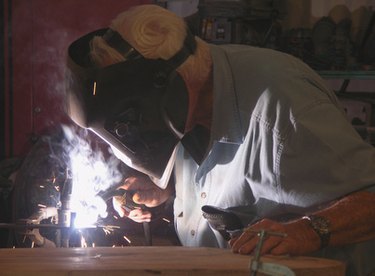
Brazing rods are used in brazing, a type of welding that uses acetylene to join metal pieces together. Brazing is typically used when joining pieces of the same metal type, such as steel to steel or copper to copper. Brazing rods are pieces of metal that melt during the welding process and attach to the separate pieces of metal to join them together once cooled.
Materials
Video of the Day
One of the key factors in different types of brazing rods is the material from which they are made. Joining different types of metals requires brazing rods composed of different materials. For example, joining tungsten carbide to steel generally requires a different kind of brazing rod than joining two copper pieces together, or two stainless steel pieces together.
Video of the Day
Thicknesses
In addition to the different types of materials that compose the brazing rod itself, these rods also differ depending on how thick they are. The thickness of the brazing rod depends both on how thick the material to be joined is and the kind of metal it is. A thick piece of material, for example, typically requires a thicker brazing. If the rod is too thin, it will melt before the metal pieces are hot enough to accept the weld. On the other hand, if the rod is too thick for the metal being joined, the welding torch might melt the pieces themselves before it melts the brazing rod.
Flux
Finally, brazing rods can also be categorized on the basis of whether or not they are covered in flux. Flux is a sort of cleaning material that prepares the metal for joining. Bare brazing rods must have flux added to them or have the flux brushed directly onto the welding materials. Flux-coated brazing rods, on the other hand, are already covered in flux and do not generally require additional flux to be added. Once welded, any remaining flux must be removed from the welded metal to prevent corrosion.